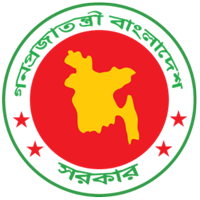Socio-demographic Factors Impacting Measles Vaccination: Perspectives in Bangladesh & Other South Asian Countries

In Bangladesh, childhood immunisation, particularly for measles, plays a vital role in reducing mortality and preventing the spread of this highly contagious disease. The country has made significant progress in immunisation, yet the uptake of the second dose of the Measles-containing vaccine (MCV2) remains a challenge.
Recent studies using data from the Demographic and Health Survey (DHS) shed light on the factors influencing measles vaccination rates among children under five in South Asian countries, including Bangladesh. While 79.8% of children in Bangladesh received their first dose of the measles vaccine (MCV1), a gap still exists when it comes to the second dose (MCV2), crucial for full immunisation.
Socio-demographic factors such as maternal education, access to healthcare, and wealth disparities have been identified as key determinants of vaccination status. Mothers who had at least four antenatal care (ANC) visits were significantly more likely to ensure their children received both doses of the measles vaccine. For example, the odds of children receiving the first dose were much higher (AOR = 1.77) when mothers made more than four ANC visits, showing the strong correlation between maternal healthcare engagement and child immunisation.
Moreover, parents with higher education levels and those living in urban areas were more likely to fully immunize their children compared to their rural counterparts. Children from wealthier households and those with parents in better occupations had higher odds of receiving both doses of the vaccine, reflecting the importance of socio-economic status.
Geographical access to healthcare facilities plays a significant role in vaccination rates. In Bangladesh, children in urban areas or those living near health centers had higher chances of receiving both MCV1 and MCV2 compared to those in remote regions. This trend mirrors findings across South Asia, where rural and hard-to-reach areas often face lower vaccination coverage due to logistical challenges, such as maintaining vaccine temperature and ensuring consistent healthcare delivery.
Interestingly, media exposure has proven to be a crucial tool in raising awareness about the importance of routine vaccinations. In Bangladesh, widespread media campaigns have contributed to increasing the coverage of MCV1, and similar approaches are encouraged to boost MCV2 rates. According to the research, parents with access to media were more likely to vaccinate their children, underlining the role of public awareness efforts in improving immunisation outcomes.
Bangladesh’s progress in childhood immunisation is commendable, with over 79% of children receiving their first dose of the measles vaccine. However, more efforts are needed to close the gap for the second dose, ensuring full protection against measles. Addressing socio-economic disparities, enhancing healthcare access in rural areas, and continuing media-driven awareness campaigns can significantly improve vaccination rates. With organised efforts and targeted interventions, Bangladesh is well-positioned to achieve even higher immunisation coverage and ensure a healthier future for its children.
Reference
Mahazabin M, Tabassum N, Syfullah SMK, Majumder UK, Islam MA. Socio-demographic factors affecting the first and second dose of measles vaccination status among under-five children: Perspectives from South Asian countries. Prev Med Rep [Internet]. 2024;45(102839):102839. Available from: https://linkinghub.elsevier.com/retrieve/pii/S2211335524002547
-
More Details
- Type:
- Theme:
- Publisher:
- Author:
- Language:
- Country:
- Location:









